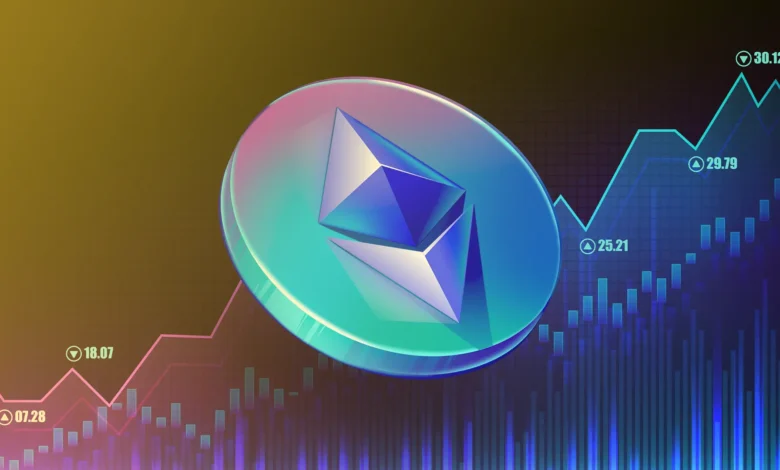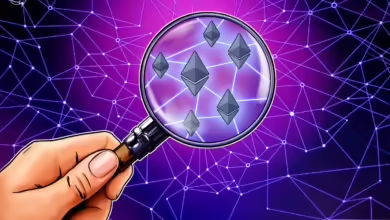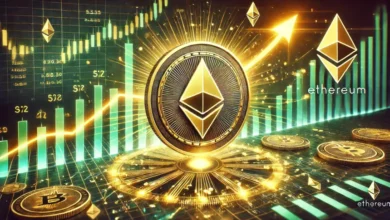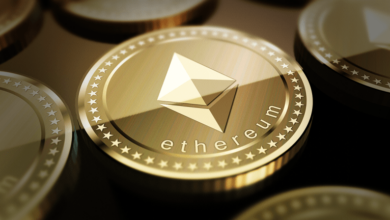Saving Ethereum from itself: experts weigh in on Vitalik Buterin’s “alignment” plan
Will fragmentation tear up Ethereum's thriving ecosystem? Vitalik Buterin calls for 'alignment', but is it too late? Experts share their insights.

Buterin suggests “alignment”.
Over the past few years, Ethereum eth 1.2% of the Ethereum ecosystem has expanded rapidly. As of 2024, more than 4,000 decentralized applications and dozens of Layer 2 solutions have been built on Ethereum, each with a unique team and vision.
However, this diversity poses a challenge: fragmentation. How can a large, decentralized ecosystem work together toward common goals without losing its unique identity?
The danger of fragmentation is now apparent. For example, consider layer 2 solutions such as Arbitrum ![]() orb 0.7% Arbitrum and Optimism
orb 0.7% Arbitrum and Optimism ![]() op 5.89% Optimism . While they aim to scale Ethereum by offloading transactions from the main chain, they operate somewhat independently. This raises concerns about how well these L2s can cooperate in the long run.
op 5.89% Optimism . While they aim to scale Ethereum by offloading transactions from the main chain, they operate somewhat independently. This raises concerns about how well these L2s can cooperate in the long run.
Ethereum co-founder Vitalik Buterin recently addressed this issue , calling for “Ethereum alignment” to unify the various projects and teams in the ecosystem.
The main problem is ensuring that all of these independent efforts—whether by L2 teams, wallet developers, or community groups—contribute to a cohesive whole.
Without balance, Ethereum risks becoming a collection of separate projects that don’t integrate well, undermining its strength as a decentralized network.
Butrin has advocated for the creation of clear metrics to assess how well individual projects align with Ethereum’s broader goals, thus reducing the risk of social stratification — where success is based more on personal connections than actual participation in the ecosystem.
Let’s dig deeper into how the metrics Buterin suggests can help Ethereum grow without losing its core values.
Three columns of Ethereum balance
Ethereum balance is based on three main types:
- values
- technology
- economic
Each type serves as a guiding principle to ensure projects make a meaningful contribution to Ethereum’s long-term success.
Alignment of values
The first column of Ethereum balance is values. Ethereum is founded on the ideals of openness, decentralization, and public goods, and these values must be shared by all projects within the ecosystem.
Open source is an important part of this. In an ecosystem driven by transparency and trust, code that is proprietary or hidden from public view raises a red flag.
Ethereum’s base layer software, such as Geth and Prysm, is completely open source, allowing anyone to review and contribute to the code. However, this standard should extend beyond the base layer.
Buterin argues that all major infrastructure projects should adhere to the Free Software Foundation and Open Source Initiative definitions of open source software.
Consider the DeFi space : projects like Uniswap ![]() Unit -0.9% Unswap are open source, which is the main reason for their strong community support. As of October 10, the total liquidity on Uniswap was around $3.4 billion , and its success is not just because it’s a great protocol – it’s because anyone can develop, focus, or improve it.
Unit -0.9% Unswap are open source, which is the main reason for their strong community support. As of October 10, the total liquidity on Uniswap was around $3.4 billion , and its success is not just because it’s a great protocol – it’s because anyone can develop, focus, or improve it.
On the other hand, projects that prioritize profit over public goods—those that introduce proprietary elements—risk creating fragmentation. For example, ZK Polygon Sets ( POL ), while a major step forward in scaling technology, still mainly operate in a centralized framework.
Proprietary code or closed projects can become single points of failure, undermining decentralization and creating unnecessary risks. Alignment of values means that as these technologies evolve, they must remain open and accessible to all, reducing the risk of centralization returning to the system.
Technological alignment
The backbone of Ethereum technology relies on common standards. Without these, the network becomes a fragmented collection of incompatible solutions. Technological alignment ensures that projects are not only innovative, but also interoperable.
Take the ERC standards as an example. The ERC-20 token standard is widely accepted and enables wallets, exchanges and applications to interact with any token built on Ethereum. As of 2024, there will be over 500,000 ERC-20 tokens, demonstrating the power of common standards.
Similarly, ERC-721 has become the foundation of the NFT ecosystem , enabling the creation of unique digital assets across multiple platforms.
However, Ethereum technology is advancing rapidly. L2 solutions, account abstraction (ERC-4337), and cross-chain bridges are becoming more prominent, and it is critical that these innovations adhere to open standards.
For example, cross-L2 migration should work seamlessly for users moving assets between chains. Currently, this process remains cumbersome and costly.
The ecosystem also faces challenges with newer technologies such as ZK-rollups. While ZK suites increase scalability and privacy, they introduce technical complexities that require strict standardization.
To avoid fragmentation, projects should work together to create new ERCs and protocols to ensure that these innovations are integrated into the wider Ethereum ecosystem rather than completely removed.
Economic alignment
The third pillar of alignment is economic. The Ethereum economy is anchored by Ethereum, and economically aligned projects should prioritize using Ethereum as a core token wherever possible.
As of October 10, the DeFi ecosystem has more than $81 billion in locked assets, with ETH serving as the backbone of many protocols.
Projects like MakerDAO ![]() mkr 0.8% maker and Aave
mkr 0.8% maker and Aave ![]() aave 2.57% Aave rely on Ethereum collateral to secure loans and strengthen their position as the most trusted asset in the Ethereum ecosystem. This network effect drives greater adoption and strengthens the broader Ethereum economy.
aave 2.57% Aave rely on Ethereum collateral to secure loans and strengthen their position as the most trusted asset in the Ethereum ecosystem. This network effect drives greater adoption and strengthens the broader Ethereum economy.
However, economic alignment goes beyond simply using ETH. Buterin suggests that projects should contribute to public goods—initiatives that benefit the entire ecosystem, not just individual projects.
For example, GitHub has raised more than $50 million to fund open source development and support infrastructure that helps the entire Ethereum network thrive.
However, challenges remain. Many projects, especially those with high transaction volumes, are increasingly relying on stablecoins instead of Ethereum. This trend risks fragmenting Ethereum’s economic model, as Ethereum is less central to the day-to-day operations of the network.
Ultimately, economic alignment means ensuring that ETH remains the primary unit of value across the ecosystem while contributing to Ethereum’s long-term success through reinvestment in public goods.
Alignment measurement criteria
To prevent “alignment” from becoming a vague or abstract concept, Buterin suggests using specific metrics to track the degree to which projects align with Ethereum’s values, technology, and economics. Let’s dive into the four key criteria he suggests :
Open source adoption
A project’s adherence to open source principles can be measured by how much its code is open to public inspection.
Projects that score high on this criterion follow the OSI and FSF definitions of open source, ensuring that they remain transparent and collaborative.
For example, fully open-source projects like Aave allow anyone to verify their smart contracts and verify security, closely aligning with Ethereum’s core ethos of decentralization and transparency.
In contrast, projects with closed source code run the risk of creating centralized points of control, which is contrary to Ethereum’s vision.
Compliance with standards
Standards Conformance measures how well a project follows Ethereum standards. Projects that adopt standards such as ERC-20 or ERC-721 ensure seamless interaction with other applications and tools in the ecosystem.
The benchmark also considers how projects contribute to the new standards through proposals to improve Ethereum. Projects contributing to such initiatives demonstrate a high level of technological alignment.
Lack of concentration and security
The walk test is a simple but effective measure: If the project team disappeared tomorrow, would it continue to work? Decentralized exchanges usually pass this test easily because their smart contracts operate independently without the need for a central authority.
In addition, insider attack testing assesses the project’s vulnerability to insider exploitation. Projects that rely heavily on centralized control score poorly here, as they are more vulnerable to insider attacks.
In contrast, projects that are resilient to such risks—due to decentralized governance—show a strong commitment to Ethereum’s decentralized vision.
Positive cumulative effect
This metric evaluates how much a project contributes to the Ethereum ecosystem and beyond. Projects that use ETH as their primary token, contribute to open source development, or donate a portion of their revenue to public goods will score highly.
Experts weigh in
As Ethereum moves towards greater scalability through L2 solutions, the balance between decentralization and efficiency becomes more delicate.
The key question is how much decentralization can be sacrificed without jeopardizing Ethereum’s core values, and whether innovation in L2 technology risks fragmenting the ecosystem.
To explore this important intersection, crypto.news consulted leading industry experts, whose insights show that Ethereum still faces unknown challenges — and that the future may require exchanges that challenge the network’s fundamental principles.
Ulyana Skladchikova, Head of Product at Blockscout , recognizes the realities of Ethereum’s evolving ecosystem. He sees Ethereum’s current state as a rapid experiment where decentralization and scalability are constantly being tested against each other.
Decentralization is a process – it is constantly changing. Right now, we’re at a stage where L2 solutions are launched iteratively, testing different hypotheses and iterating based on what works. Trade-offs are taking place as we balance efficiency and Ethereum’s core decentralization goals, but transparency must remain non-negotiable.
However, while Ethereum’s decentralized identity is being tested, the journey to full decentralization is far from complete.
We are still years away from fully decentralized systems like sorters and anti-fraud submissions. It’s not just about technology – it’s about community engagement. We need more active participation. Decentralization cannot be driven by a small group of super users. It needs a much wider base to ensure its success.
Roy Hui, co-founder and CEO of LightLink , offers a more pragmatic view. While he values decentralization, he argues that not all projects need to pursue it with the same intensity.
The importance of decentralization depends on what goals a project is aiming for. For example, gaming chains do not require a decentralized level of financial programs. At LightLink, while efficiency may take precedence in some areas, we make sure that user autonomy is never compromised. Users should always be able to control their assets, even when some trade-offs are made around concentration.
Hoy agrees that decentralization remains the ultimate goal – it’s not something that can be achieved overnight.
Decentralizing a chain is like trying to rebuild an airplane mid-flight – it’s incredibly challenging. By aligning with Ethereum security standards and decentralizing processes such as anti-fraud submissions, we strike a balance between performance and decentralization without sacrificing either. It’s a gradual journey, but we’re getting there.
Both Skladchikova and Hui also raised the issue of fragmentation in Ethereum, specifically regarding L2-L2 bridging. As Skladchikova points out:
The biggest blind spot right now is the L2-L2 bridge. Without safe and transparent bridges, we risk creating isolated ecosystems where different L2s do not communicate well with each other. This can lead to fragmented solutions, where L2s do not work as part of the wider Ethereum ecosystem. Bridges must be secure and transparent, otherwise the entire network may face serious risks of fragmentation.
While Skladchikova focuses on structural risks, Hui highlights the user experience, arguing that the complexity of on-chain asset transfers should be simplified to minimize friction.
Cross-chain ownership and asset transfer is primarily a UX challenge. Users don’t have to think about the complexities of the chain they are interacting with. The process should be seamless and intuitive. Users should be able to move assets without worrying about underlying technical issues.
As Ethereum continues to grow, both experts also expressed concern about social absorption — the risk of power and influence being concentrated in the hands of a few insiders rather than evenly distributed across the ecosystem.
“The Ethereum community is still relatively small, and early relationships play a big role in what is built and promoted,” Skladchikova explains.
But as the ecosystem matures, projects built on passion will die out. Innovation will ultimately win, but we must ensure that the system remains open and transparent to avoid social capture.
Huey and Dan Enright, ecosystem lead at LightLink, are actively working to prevent social adoption on their platform.
We are forming a DAO that will oversee decision making and resource allocation. By decentralizing governance, we ensure that influence in LiteLink is fairly distributed. It’s not just about who gets early access, it’s about creating opportunities for everyone to participate.
Enright adds:
Our goal is to make governance accessible, so it is not dominated by insiders. We strive to empower independent developers and give them the tools they need to run their projects. The future should be competence, not communication.
Experts agree that decentralization remains the ultimate goal, but the way forward requires compromise, innovation, and a steadfast commitment to maintaining Ethereum as an open, fair, and transparent ecosystem.





